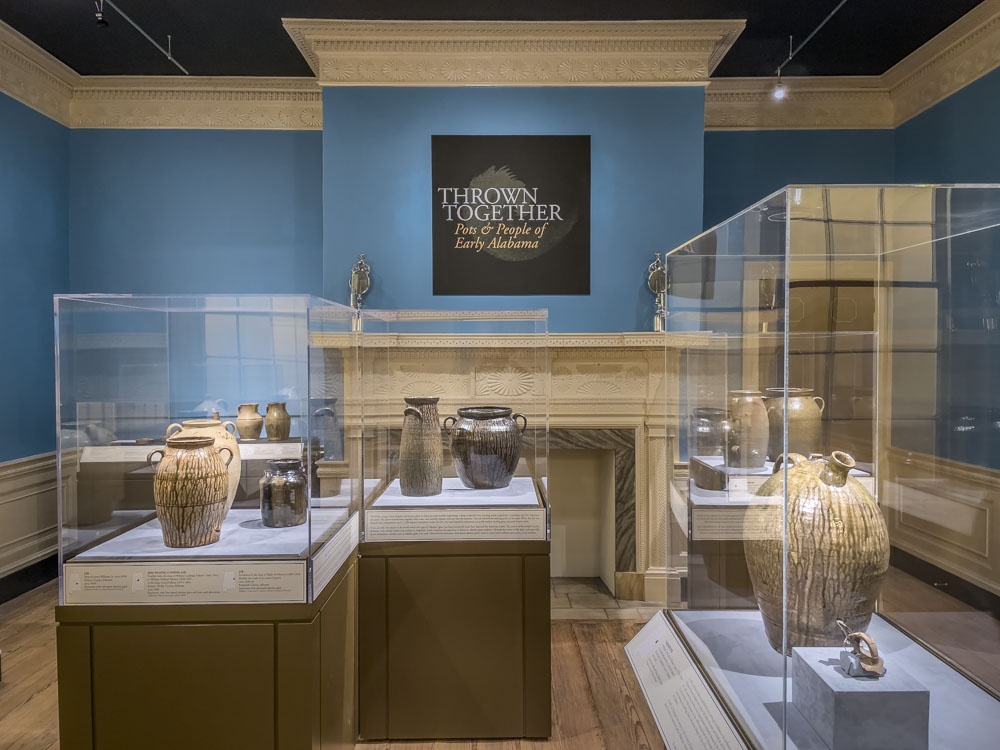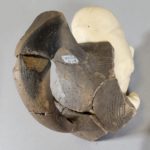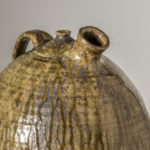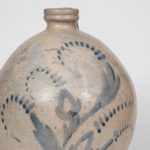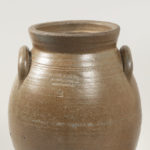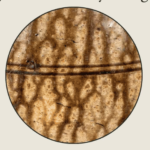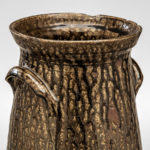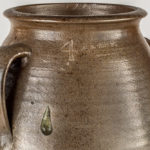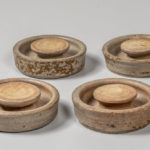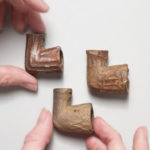Thrown Together: Pots & People of Early Alabama
Alabama’s pottery traditions reflect the distinctive combination of people “thrown together” across its landscape. This exhibition explores the human hands that made, held, and preserved these objects.
Across the present-day state of Alabama, Indigenous people including the Muscogee (Creek), Choctaw, Cherokee, and Chickasaw, practiced ceramic traditions brought by their ancestors into the region over 10,000 years ago. Colonial and American settlers were both a threat and a market for these craftspeople, who produced hybrid wares that meshed traditional techniques and designs that appealed to these foreign consumers.
The geography of Alabama influenced how and where diverse potters and people came together. A tail of the Appalachian Mountains runs from south to north across the middle of the state. Most of the 19th century potters north of the mountains came from Tennessee, Virginia, and the Ohio River Valley. South of the mountains, the majority arrived from Georgia or South Carolina. The Gulf Coast was the site of early interactions between French, Spanish and British colonists and the Indigenous people of Alabama.
Whether they came from the north, east, or across the Atlantic, immigrants brought with them enslaved people of African descent, including skilled ceramists.
Together, their hands shaped the clay of the American South.
This exhibition was on view at MESDA from March through September, 2023
